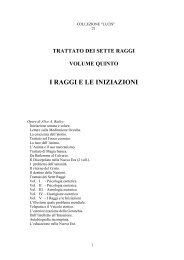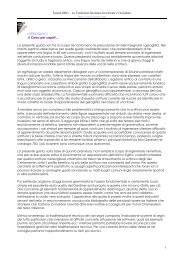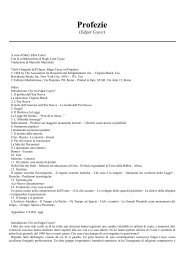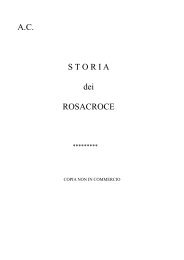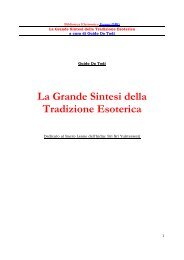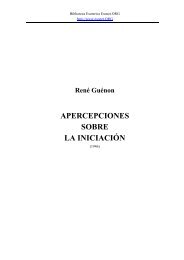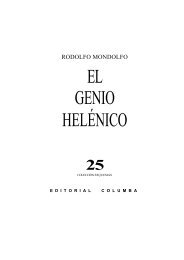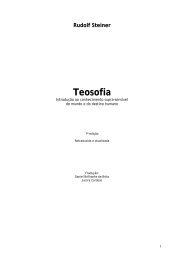Biblioteca Esoterica Esonet.ORG http://www.esonet.ORG 1
Biblioteca Esoterica Esonet.ORG http://www.esonet.ORG 1
Biblioteca Esoterica Esonet.ORG http://www.esonet.ORG 1
Create successful ePaper yourself
Turn your PDF publications into a flip-book with our unique Google optimized e-Paper software.
<strong>Biblioteca</strong> <strong>Esoterica</strong> <strong>Esonet</strong>.<strong>ORG</strong><br />
<strong>http</strong>://<strong>www</strong>.<strong>esonet</strong>.<strong>ORG</strong><br />
During the twentieth century, there has been constantly increasing stress upon<br />
individualism and personal self-expression, even in very young children whose behavior<br />
is mostly imitative (or in some cases polarized by distaste, fear, and revolt). As a result the<br />
quality of relationships desired within the family group has become confused with the<br />
quality of relationships appropriate within the peer groups in which family members<br />
participate. Naive, immature, or overly idealistic parents desire to be "pals" with their<br />
young and (even more) adolescent children. Parents no longer are able, or even willing, to<br />
accept and perform their archetypal functions. Having lost its archetypal character, the<br />
family is no longer, or at least not effectively and significantly, the next "greater whole" to<br />
which the child belongs. If the child does not learn to grow within this primordial greater<br />
whole and does not feel that he or she belongs to it, later the child will encounter difficulty<br />
feeling a sense of belongingness to a still greater whole — to the community or nation and<br />
eventually to the largest experienceable wholes, humanity and the planet earth.<br />
When such patterns of thwarted development pervade an entire society, the only<br />
relationships human beings can accept are with peers. These relationships are theoretically<br />
horizontal, though in fact they are not always so. Lacking a sense of belonging to an<br />
organic whole, modern pseudo-individuals envision peer groups as being formed by the<br />
coalescence of more or less randomly formed horizontal relationships (a picture which is<br />
reinforced in the United States by the restless, peripatetic nature of American society).<br />
This, of course, is the democratic ideal, as it has come to be understood by recent<br />
generations for whom all vertical relationships have become suspect. No great difference<br />
is recognized between the often oppressive if not tyrannical "verticality" of social<br />
relationships (employer-employee, governor-governed, general-private, and so on) and<br />
the hierarchical, containing character of the immense series of natural and cosmic wholes.<br />
The issue may seem to refer only to social processes and to the place occupied in the<br />
modem world by the family and the multitude of peer-groups, unions, clubs, and societies<br />
bringing together people who have common interests; but it actually refers to the whole<br />
picture human beings make of their destiny and of the future developments of<br />
consciousness and activity on earth. This picture radically changes when seen in relation<br />
to the "model" of the cycle of being and the concept of holarchy I have presented. The<br />
evolution of the earth, humanity, cultures, groups and persons need no longer be<br />
interpreted and understood as a one-way aggregation of random contacts operating<br />
within the laws of attraction and repulsion (important as these laws are). It can be seen as<br />
a two-way process integrating the involution of forms (archetypes) and the evolution of<br />
material energy-systems. Separate elements — be they atoms, living organisms, persons,<br />
or groups — do not just come together; they are brought together. Pre-existing archetypal<br />
patterns of organization gradually bring together material elements — including at the<br />
sociocultural level, human beings — into structuring "fields of forces." The relationship<br />
between these archetypes and the elements that accept their morphogenetic pressures —<br />
albeit for a long time compulsively and instinctively, but eventually consciously — is truly<br />
vertical.<br />
Such relationships become focused in various ways. Catalytic agents exist in chemistry;<br />
at the level of human evolution a similar function is performed by transpersonal agents<br />
143



